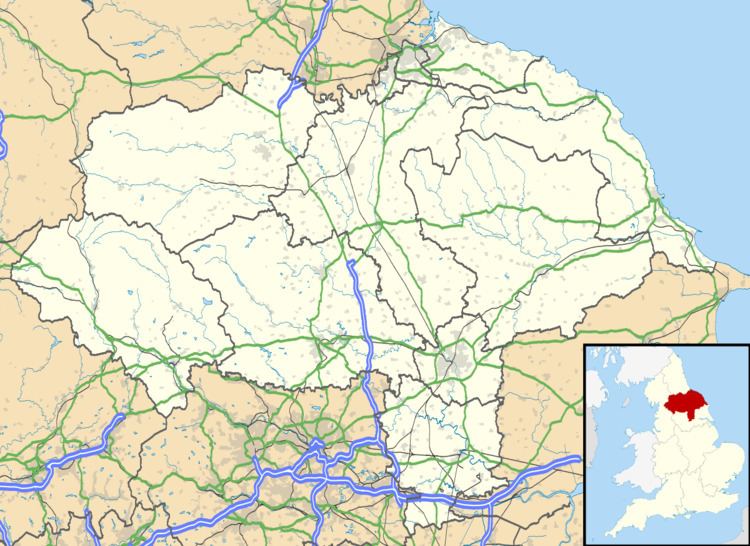Population 5,088 (2011.ward) Unitary authority Local time Saturday 11:50 AM | OS grid reference NZ554209 Sovereign state United Kingdom Dialling code 01642 Post town Middlesbrough | |
 | ||
Weather 12°C, Wind W at 16 km/h, 75% Humidity | ||
Grangetown is a township in the borough of Redcar and Cleveland and the ceremonial county of North Yorkshire, England.
Contents
- Map of Grangetown Middlesbrough UK
- Geography and history
- Politics
- Borough Council
- Notable people
- References
Map of Grangetown, Middlesbrough, UK
Geography and history
Grangetown is situated on the eastern outskirts of the borough of Middlesbrough, beyond South Bank between the town and west of the industrial chemical complex at ICI Wilton. It is approximately 3 miles (4.8 km) east of Middlesbrough centre and 4 miles (6.4 km) from Redcar. Although outside of the Middlesbrough authority, it forms part of the Middlesbrough built-up area sub-division. It was historically part of the parish and urban district of Eston. Grangetown was brought into Teesside County Borough in 1968; from 1974 to 1996, it formed part of the County of Cleveland, and in 1996 it became part of the Unitary Authority of Redcar and Cleveland, which replaced the district of Langbaurgh-on-Tees. It has a population of approximately 8,000 residents.
The impetus for the development of Grangetown was the discovery of ironstone in the Eston Hills in 1840, and the subsequent development of the iron and steel industry along the riverbanks by Messrs. Bolckow and Vaughan. By 1914, it was community of approximately 5,500 people with the majority of the houses lying between Bolckow Road and the steel works. There was a market square, shopping centre, boarding school, three pubs, six places of worship, a police station and public bathhouse. Though the inhabitants came from many parts of the country, the community had built up a strong identity and local pride. The majority of men worked in the steel works, but a wide range of skills was represented within the town and a whole cross-section of society lived together in the town.
Grangetown underwent a period of quite rapid expansion between 1914 and 1939. Both the steel companies and the local council built estates from Bolckow Road to and across the new A1085 Trunk Road. The population in 1939 was approximately 9,000. After the war, council house building was extended and in the 1950s reached Fabian Road.
The modern town has long since moved from its original location. Victorian terraced houses, nestled against the heavy industry along the River Tees have been replaced with the warehouses and depots of lighter industry. Some new houses have been built over the years, but Grangetown has lost the popularity of its heyday of the earlier part of the 20th century. The local authority, Redcar and Cleveland Council have embarked on the regeneration project named Greater Eston.
Politics
Grangetown is part of Redcar constituency and is represented by Labour Anna Turley in the House of Commons. It is part of the North East England European Parliament constituency, where it is represented by two Labour MEPs and a UKIP MEP.
Borough Council
In the 2011 local elections, the following members were returned to Redcar and Cleveland Borough Council:
